History of Tambov
Foundation of Tambov
Tambov was founded on a hill at the confluence of the Tsna and Studenets rivers as one of the southern strongholds of the Tsardom of Russia in 1636. The garrison of the fortress was over 1,000 soldiers. At that time, a number of fortresses and fortifications were founded to protect the southern borders of Russia from the raids of the Crimean Tatars and Nogais.
According to one of the versions, the original name of the fortress was written as “Tonbov” and was associated with the alleged construction site of the fortress opposite the Mordovian village of Tonbov. Although the fortress was eventually founded elsewhere, it retained its original name. The root of the word is most likely of Moksha origin (“tonbov” - a whirlpool).
At the end of the 17th century, Tambov became one of the gathering points of the Russian troops that took part in the Azov campaigns aimed at capturing the Turkish fortress of Azov to gain access to the Sea of Azov. The failure of the first campaign forced Peter I to take measures for the fastest construction of the Russian navy. Tambov timber was used to build the first Russian fleet.
More Historical Facts…
Tambov in the 18th-19th centuries
At the turn of the 17th and 18th centuries, a garrison school for soldiers was opened - the first educational institution in Tambov. In the first half of the 18th century, there was still a threat of raids from the steppes of the Lower Volga and Kuban regions. In 1738, the Tambov fortress was rebuilt after a fire destroyed the old one.
In 1779, the Tambov Viceroyalty was established with the center in Tambov. It was significantly larger than today’s Tambov Oblast and included parts of Mordovia, Lipetsk, Voronezh, Penza, and Ryazan regions. Tambov then resembled a large village: wooden houses with thatched roofs, streets without pavements, vegetable gardens. After it received the status of an administrative center, its rapid development began.
In 1781, the coat of arms of Tambov was approved with an image of a golden hive and three bees on a blue-green field. The beehive and bees reflected one of the flourishing local crafts of that time - bee-keeping. Meadow herbs and linden forests became the reason for the special taste and healing powers of Tambov honey. The bee is also a traditional symbol of hard work, order, fertility, and abundance.
In December 1785, Gavriil Derzhavin, a famous Russian poet and statesman of the 18th century, was appointed the governor of the Tambov Viceroyalty. This had a significant impact on the development of Tambov. In 1796, the Tambov Viceroyalty became the Tambov Governorate.
At the beginning of the 19th century, the Tambov Governorate became one of the main breadbaskets of the Russian Empire. The population of Tambov exceeded 10 thousand people. During the Patriotic War of 1812 (the French invasion of Russia), at the expense of the local population, a people’s militia of 12 thousand people was formed and armed. When the French approached Moscow, refugees from the nearby towns began to arrive in Tambov. Large parties of captured enemy soldiers and officers also arrived here.
In 1824, the first gymnasium was opened in Tambov. In December 1833, a public library was opened. In the 1840s, there were 45 streets in Tambov, 2,332 private houses (69 stone houses), 12 taverns, 3 hotels, 20 drinking houses, 7 shops of fashionable clothes and haberdashery. The Tambov Governorate experienced industrial growth. In 1872, Tambov had about 25 thousand residents, in 1897 - more than 48 thousand people, in 1910 - 68,400 people.
Tambov in the 20th century
In 1920-1921, the headquarters for the suppression of the peasant uprising, known in history as the Tambov Rebellion, was located in Tambov. It was one of the largest peasant uprisings against the power of the Bolsheviks during the Civil War in Russia. In the post-revolutionary years, the rapid development of industry began in Tambov. First of all, these were enterprises for the production of cloth and yarn.
In 1928, the Tambov Governorate was included in the Central Black Earth Oblast. In 1937, a separate Tambov Oblast was formed, which included the territory of the present Penza and Tambov regions. In 1939, Tambov Oblast received its present borders.
In the 1920s-1930s, the composition of the population of Tambov changed noticeably. In fact, the city lost most of the pre-revolutionary social estates. People from the villages replaced them. In the late 1930s, construction of residential buildings, industrial and cultural facilities was resumed in Tambov.
During the Second World War, Tambov twice became a de facto front-line city: in November-December 1941, when the German units were located between Yelets and Lipetsk, and in the second half of 1942, when the front line passed through Voronezh.
The proximity of the front did not allow industrial enterprises to be evacuated to Tambov from the western regions of the country, but for the same reason Tambov was filled with evacuation hospitals. Most often seriously wounded soldiers were delivered here in mass numbers. A lot of them died of their wounds and were buried in Tambov, which explains the presence of large military graves at the Vozdvizhenskoye cemetery of the city.
In the post-war period, Tambov, which had not experienced the destruction associated with the battles, for several years remained aloof from the large-scale construction that took place in the Soviet cities destroyed by the war. However, industry began to grow rapidly. Tambov became one of the main centers of chemical engineering.
In 1965, the city was divided into 3 districts: Oktyabrsky, Leninsky, and Sovetsky. The 1970s-1980s were the peak of Tambov’s prosperity. In 1986, the population reached 300,000 people. At the same time, the 350th anniversary of the city was celebrated.
Pictures of Tambov

Tambov from above
Author: Alexander Babin

Flower beds in Tambov
Author: Alexander Syroid

Winter in Tambov
Author: Sergio Bagna
Tambov - Features
The chemical industry and mechanical engineering are well developed in Tambov. However, it is one of the most environmentally friendly cities in Russia. This is largely due to less street traffic compared to other cities. Tambov is a fairly green city with several parks and public gardens. The City Day of Tambov is celebrated on June 12.
The climate is moderately continental. The average temperature of the coldest month (February) is about minus 8 degrees Celsius, the warmest (July) - about plus 21 degrees Celsius. Winter is moderately cold and comes in December. Summers are long and warm.
Tambov is divided into three administrative districts: Sovetsky, Oktyabrsky, and Leninsky. The largest streets in the city are Sovetskaya and Karl Marx streets. Urban transport is represented by trolleybuses, buses, minibuses and taxis.
The city is located on the federal highway R22 “Caspian” Moscow - Astrakhan. Travel time to Moscow by car is about 6 hours. Tambov Airport offers regular flights to St. Petersburg, Yekaterinburg, Krasnodar, and Sochi.
It is believed that the catch phrase “The Tambov wolf is your comrade”, which is very common in Russia, was first heard in the film “The Rumyantsev Case” (1955). Today, the Tambov wolf has become the same recognizable symbol of Tambov as gingerbread for Tula or brides for Ivanovo. The Tambov wolf in the city can be found on T-shirts, magnets, calendars, plates, mugs, vodka, and other souvenirs. At the entrance to the city, there is a monument to the Tambov wolf, and in the city itself there is a museum of the wolf.
Tambov, unlike many other cities in Russia, was never captured during wars. This helped to preserve most of the historical center, including the old houses of ordinary townspeople, merchants, and landowners. Most of the streets of the old town have buildings of the 19th and early 20th centuries.
Main Attractions of Tambov
Monuments to the Tambov wolf. There are two monuments to the famous Tambov wolf in the city - at the entrance to Tambov from Penza on Rasskazovskoye Highway and on the territory of “Hotel” (Oktyabrskaya Street, 95b).
A three-meter (with a pedestal) wooden figure of a wolf sitting against the background of a forest at the entrance to Tambov was installed in 2008. The inscription says: “The Tambov wolf is a reliable comrade.” The second monument is a figure of a wolf lying on a mountain and personifying calmness, confidence, and hospitality. The following inscription is engraved on the monument: “When you give joy to people, the Tambov wolf is your comrade!”
Aseev’s Estate - a picturesque museum complex consisting of a house, a park, and a fountain. This mansion was built for the industrialist M.V. Aseev in the Art Nouveau, Classicism, and Baroque styles in 1904-1905. During the Soviet times, it was used as an orphanage and a sanatorium. In 2014, a museum was opened here. Today, it is the main architectural attraction of Tambov. Naberezhnaya Street, 22/1.
Kommunalnaya Street - one of the central streets of Tambov with a pedestrian part, traditionally called “Tambov Arbat”. Stone merchant mansions of the 19th - early 20th centuries are located along this street lined with cobblestones. Today, the former trading stalls house shops and cafes. This is one of the most beautiful parts of Tambov.
The Cathedral of the Saviour’s Transfiguration (1783) - the oldest Orthodox church in Tambov, an architectural monument of federal significance. The three-tiered 42-meter bell tower was built in 1817. In the 1930s, the bell tower was dismantled, and the main building was turned into a local history museum. In the 1990s, the building was returned to the Russian Orthodox Church. In 2011, the bell tower was recreated. Sobornaya Square, 4.
Kazan Monastery of the Mother of God - a picturesque architectural ensemble in the Baroque style located in the center of Tambov. During the Soviet era, the monastery was closed. Its revival began in 1992. There are three churches, two chapels, and seminary buildings on the territory of the monastery. The tallest bell tower in Russia (107 meters) is also located here. Gorkogo Street, 3.
Ascension Convent - a historical and cultural monument of regional significance. Its bright and picturesque churches are considered the most beautiful churches in the Tambov region. The main Cathedral of the Ascension resembles a fairytale house. Moskovskaya Street, 37.
Church of the Exaltation of the Holy Cross - a red-brick Catholic church built in the Gothic style for the representatives of the local Polish community (mainly consisting of Poles who were exiled to this region after the 1863 uprising) at the beginning of the 20th century. In the 1990s, the church was restored at the expense of Poland. Kronshtadtskaya Street, 14A.
Tambov Regional Museum of Local Lore - one of the oldest museums in Russia. It was founded for the 100th anniversary of the formation of the Tambov Viceroyalty in 1879. The museum funds include more than 100 thousand exhibits including a collection of Russian printed engravings of the 18th-19th centuries, a collection of Chinese and Dutch decorative vases of the 18th-19th centuries, a paleontological collection of invertebrates, a collection of rocks, etc. Derzhavinskaya Street, 3.
Tambov Regional Picture Gallery - the largest art museum in Tambov and Tambov Oblast. Today, the gallery has three departments: Russian art of the 18th century, Russian art of the 19th - early 20th century, Western European art of the 16th-19th centuries. In total, the collection has more than 5 thousand works of art; several hundred are exhibited in the halls. Sovetskaya Street, 97.
Park of Culture and Rest - the main park of Tambov located in the very center of the city, between Sovetskaya Street and the Tsna River canal. On the territory of the park there are rides, cafes, a dance floor, and a Ferris wheel. A suspended pedestrian bridge leads from the park to the opposite bank of the river.


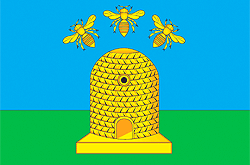
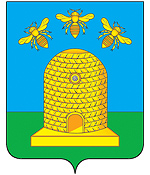
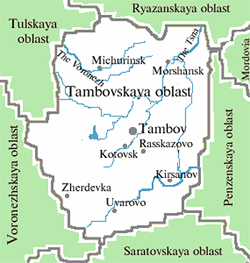



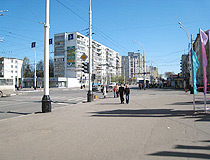

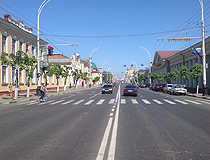
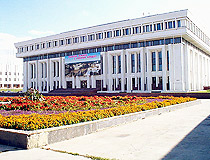
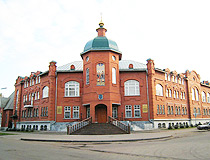
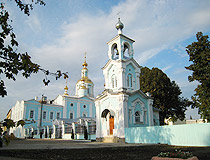
The comments of our visitors